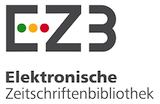O SISTEMA CARÓTICO DO ENCÉFALO DE PRIMATA NEOTROPICAL, ANATOMIA DA ARTÉRIA INTER-HEMISFÉRICA (Cebus apella, Linnaeus, 1766)
DOI:
https://doi.org/10.5216/cab.v6i3.363Abstract
Trinta hemisférios cerebrais do primata Cebus apella foram estudados. Os cérebros foram injetados com solução de látex corado (neoprene 450 e sulvinil corante), fixados em formaldeído a 10% e dissecados sob lupa óptica para fins de estudo da morfologia da artéria inter-hemisférica e destino de seus ramos. A artéria representa o resultado da anastomose da artéria cerebral rostral dos antímeros direito e esquerdo, após sua penetração na fenda inter-hemisférica. Originam-se da artéria inter-hemisférica ramos em diferentes disposições para as regiões cerebrais: pré-frontal; frontopolar; fronto-superior, pré-central e pós-central. A análise morfológica do aporte sangüíneo dessas regiões cerebrais é indicativa do abundante suprimento dessas regiões corticais cerebrais responsáveis por movimentos voluntários típicos deste primata. PALAVRAS-CHAVE: Artéria cerebral anterior, Cebus apella, primata, sistema carotídicoDownloads
Download data is not yet available.
Downloads
Published
2006-10-31
How to Cite
FERREIRA, J. R.; ABREU, N. H. L. de; PIRES, J. S.; RIBEIRO, B. N. O SISTEMA CARÓTICO DO ENCÉFALO DE PRIMATA NEOTROPICAL, ANATOMIA DA ARTÉRIA INTER-HEMISFÉRICA (Cebus apella, Linnaeus, 1766). Brazilian Animal Science/ Ciência Animal Brasileira, Goiânia, v. 6, n. 3, p. 203–212, 2006. DOI: 10.5216/cab.v6i3.363. Disponível em: https://revistas.ufg.br/vet/article/view/363. Acesso em: 11 jan. 2025.
Issue
Section
Veterinary Medicine
License
Authors who publish with this journal agree to the following terms:
- Authors retain copyright and grant the journal right of first publication with the work simultaneously licensed under a Creative Commons Attribution License that allows others to share the work with an acknowledgement of the work's authorship and initial publication in this journal.
- Authors are able to enter into separate, additional contractual arrangements for the non-exclusive distribution of the journal's published version of the work (e.g., post it to an institutional repository or publish it in a book), with an acknowledgement of its initial publication in this journal.
- Authors are permitted and encouraged to post their work online (e.g. in institutional repositories or on their website) prior to and during the submission process, as it can lead to productive exchanges, as well as earlier and greater citation of published work (See The Effect of Open Access).





























